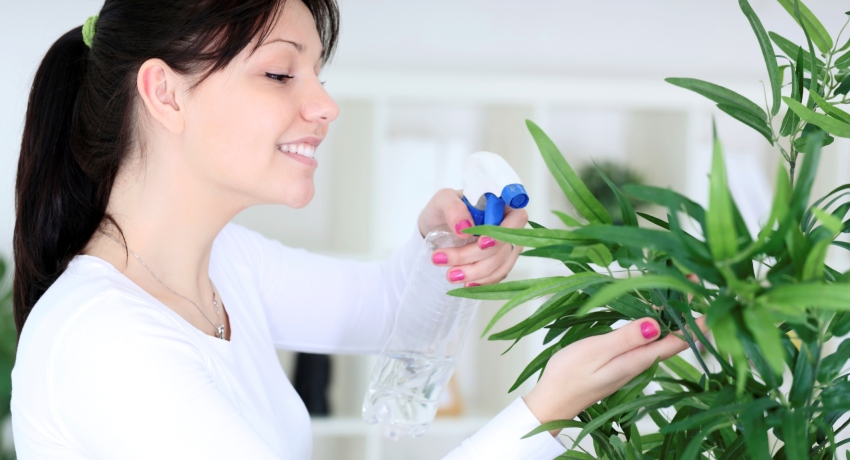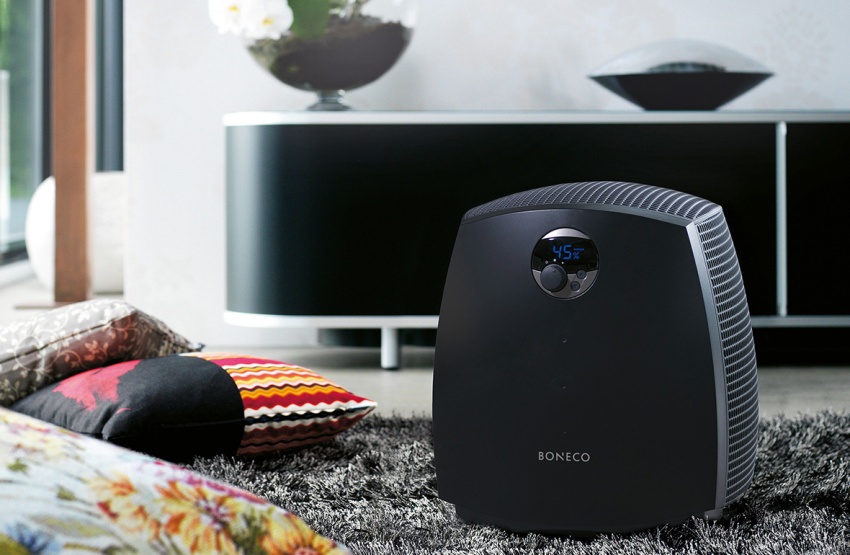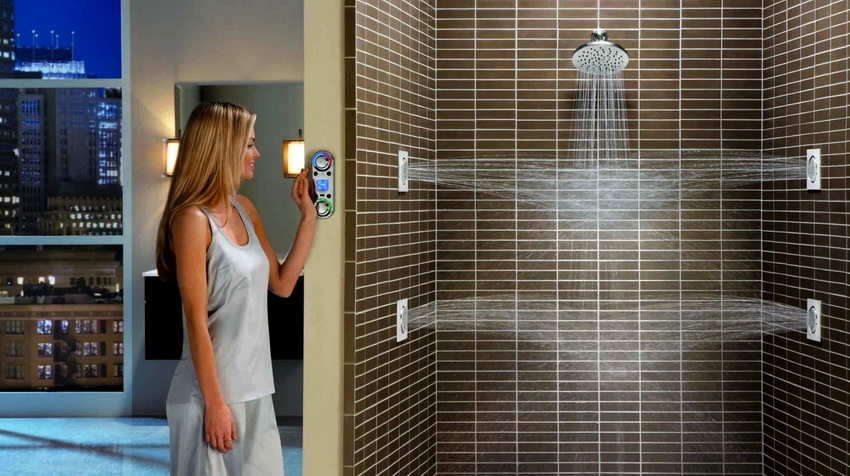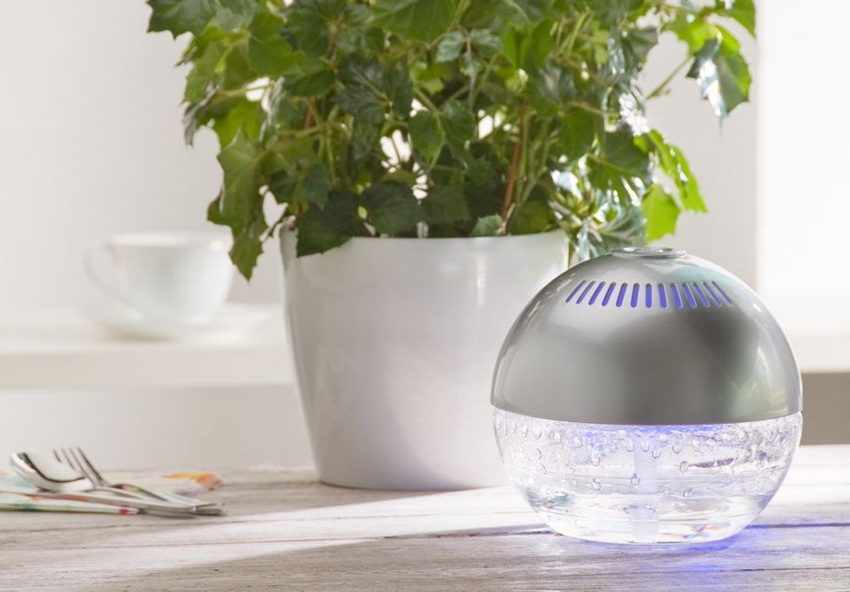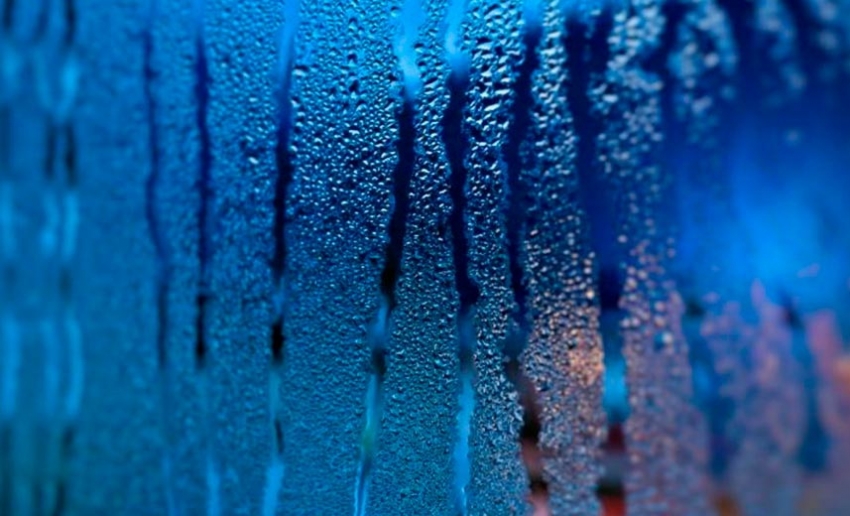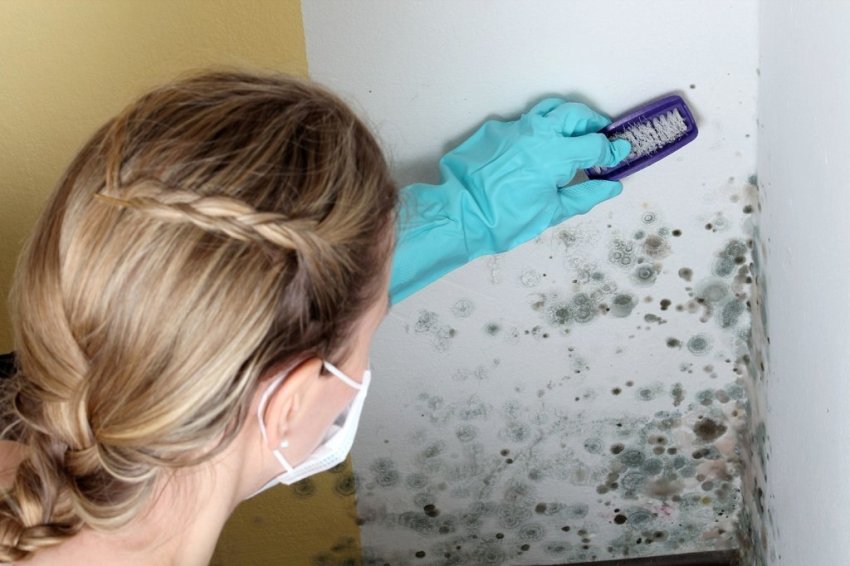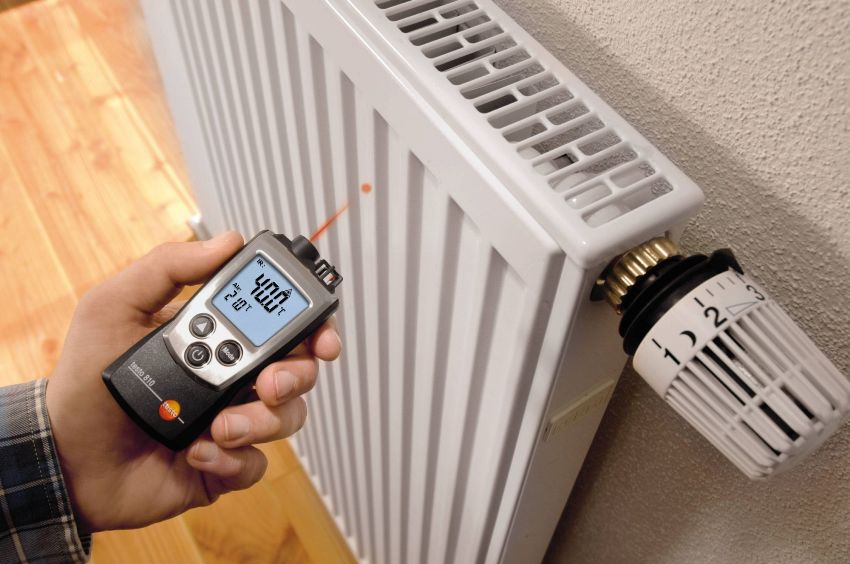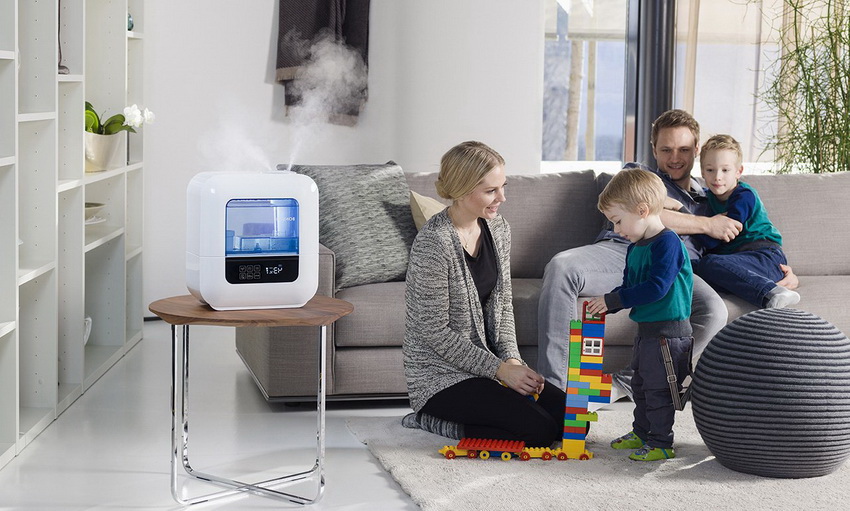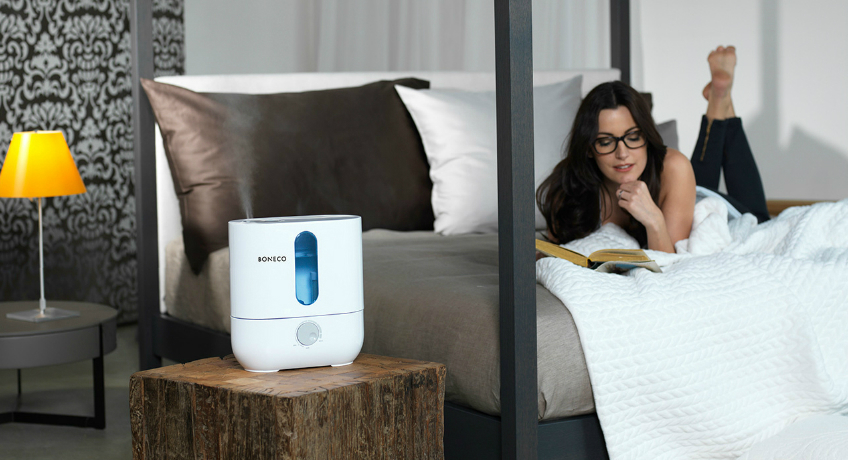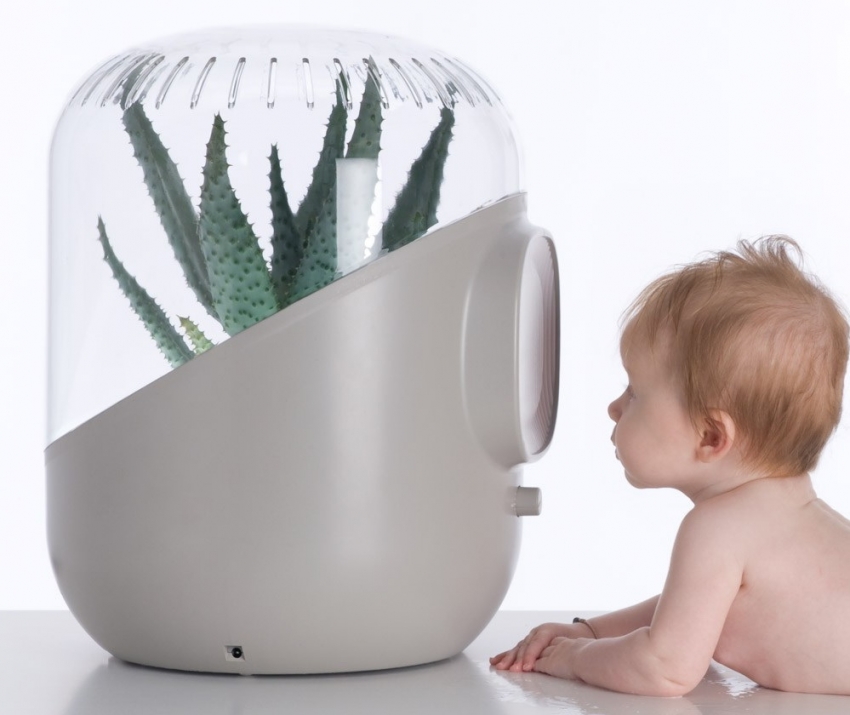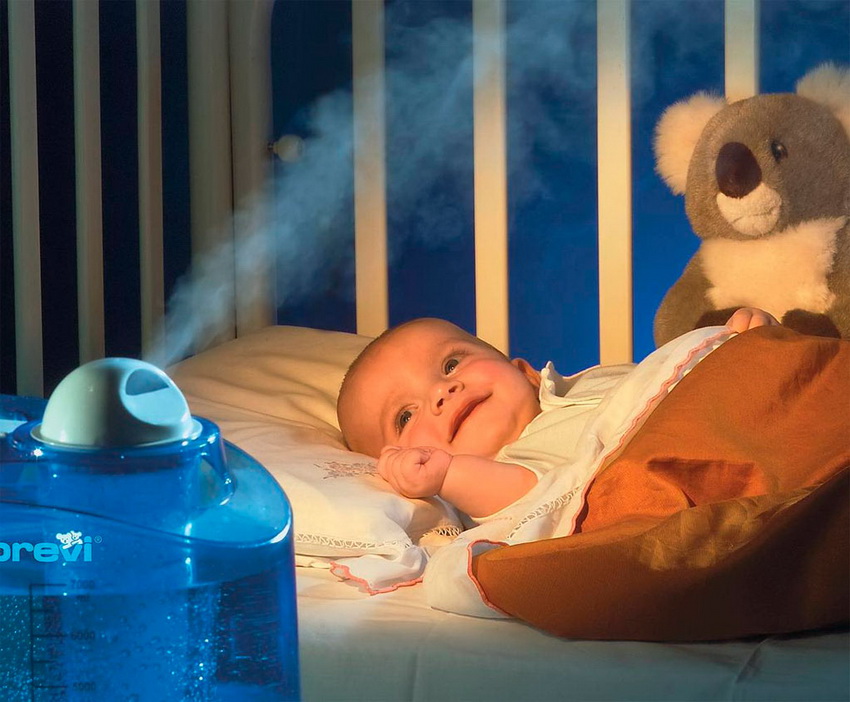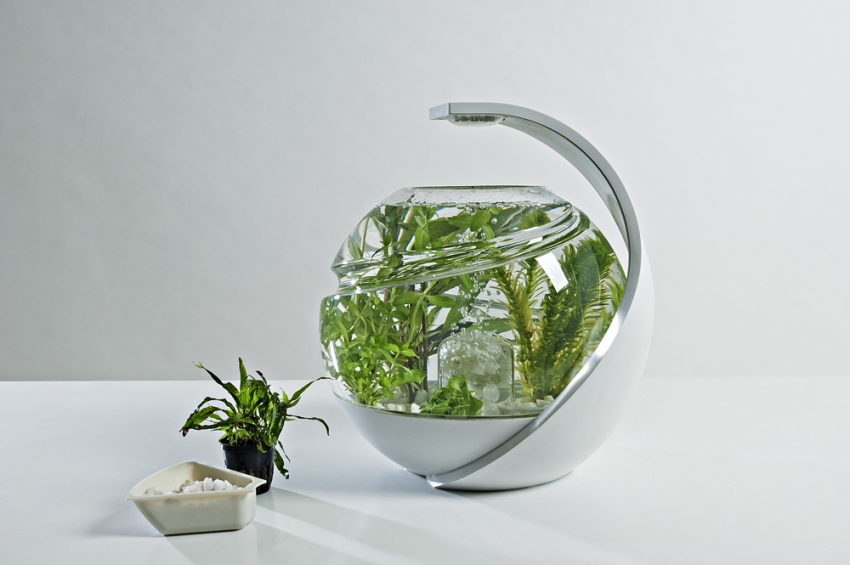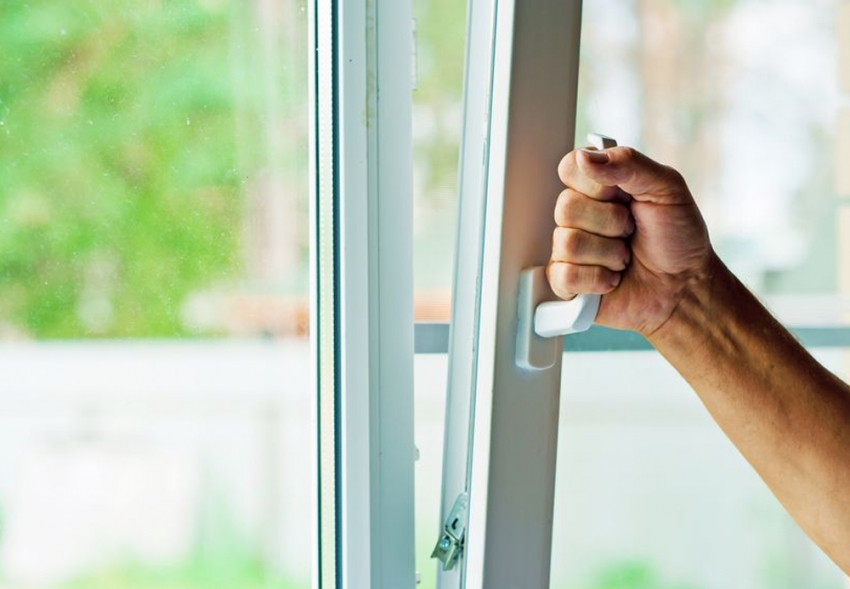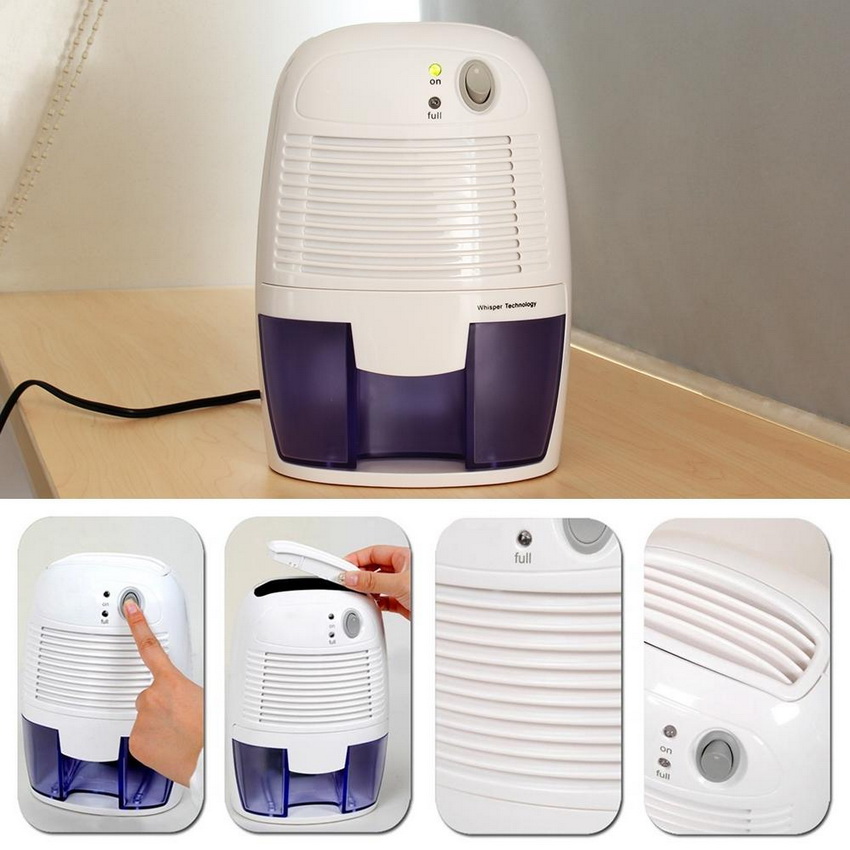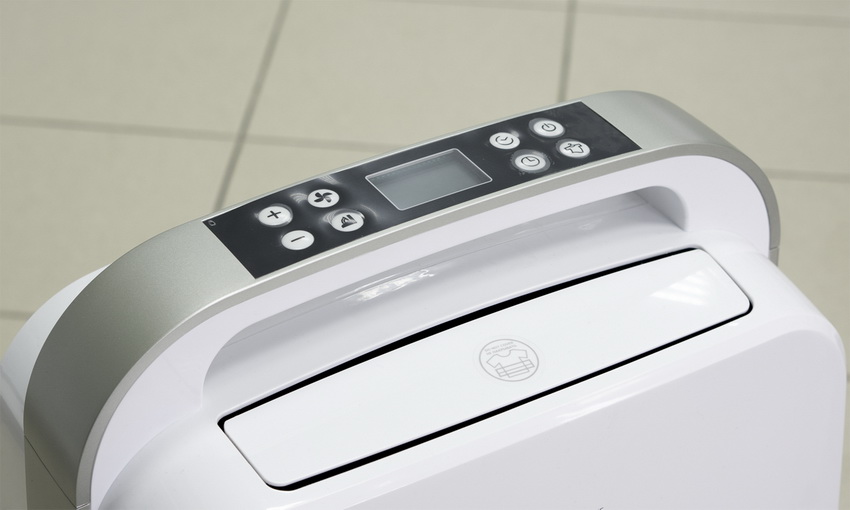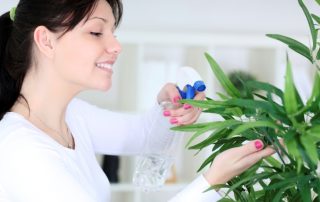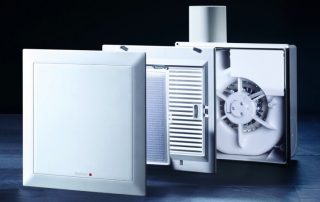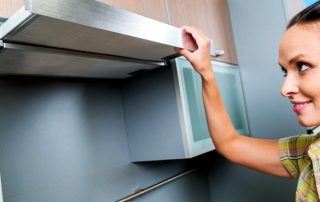The article discusses in detail such a concept as air humidity in an apartment: the norm of this indicator for residential premises for various purposes, prescribed by GOST, the consequences for a person arising from deviations from the norm in one direction or the other. The text describes alternative methods for measuring moisture levels and appliancesintended for this, as well as recommendations for maintaining optimal climatic conditions.
Content [Hide]
Air humidity in the apartment: normal water content for comfortable living conditions
The optimal level of air humidity is one of the components that provide comfortable climatic conditions for human living. Moreover, each of the premises, depending on its purpose, has its own microclimate. Most often, people care about the temperature and quality of air masses in the house, forgetting about this indicator. But it is the number of water molecules (steam) in the air that affects the perception of temperature by the human body, the safety of the indoor environment and the condition of plants.
Note! The generally accepted average indicator of normal air humidity in an apartment should be 45%. It can vary depending on the type of premises and its operating conditions.
A deviation from the norm is possible both in the winter season and in the warm season. In both cases, a lack or an excess of moisture entails a deterioration in human health, the condition of plants and damage to furniture, decoration, etc.
What should be the humidity in the apartment (average values for the main premises):
| Room type | Moisture level,% |
| Dining room | 40-60 |
| Bathroom, kitchen | 40-60 |
| Library and work area | 30-40 |
| Bedroom | 40-50 |
| Children | 45-60 |
Rooms such as the kitchen, bathroom and toilet will always have an increased level of moisture, so the standard for these rooms is higher than for other rooms.
What are the consequences of deviation from humidity standards in the apartment: dry air
When the batteries are turned on, the indoor air becomes dry. As a result, the mucous membrane of the throat and nasal cavity is irritated in the residents. Drying of hair and skin is observed. If the humidity level is violated in the living room, static electricity is generated, which lifts dust particles into the air. This process can form the basis for the spread of germs and dust mites.
Excessive dryness of the room entails many negative consequences:
- a decrease in the elasticity of the skin, nails and hair - as a result of this, dermatitis, peeling, microcracks and premature wrinkles appear;
- dryness of the mucous membrane of the eyes - redness, unpleasant itching and a feeling of foreign bodies ("sand") appear;
- blood thickens - because of this, blood circulation slows down, a person develops weakness, headaches. There is a decrease in performance, the heart is exposed to increased loads and wears out faster;
- the viscosity of intestinal and gastric juice increases - the work of the digestive system slows down significantly;
- dry airways - as a result, local immunity is weakened, the likelihood of colds and infectious diseases increases;
- air quality decreases - a large number of allergens are concentrated in the air masses, which, at a normal air humidity in the room, are bound by water particles.
Aboutpay attentionnie! Plants and animals in the apartment suffer from lack of moisture. The service life of wooden furniture and decoration decreases, they fade, become covered with cracks.
What are the consequences of exceeding the humidity in the room
An excess of water can also be dangerous to humans, so many people wonder what air humidity is considered normal in an apartment and how to keep climatic conditions within this indicator. The increased water vapor content in the room becomes an excellent breeding ground for fungi, mold and harmful bacteria.
In such conditions, many problems arise:
- The frequency and severity of respiratory diseases increases - diseases such as bronchitis, runny nose, allergies and asthma become chronic and difficult to treat.
- The microclimate in the rooms becomes unacceptable for life - people feel dampness or stuffiness in the rooms.
- The feeling of freshness is lost - the discharge of multiplying pathogenic organisms causes the appearance of unpleasant odors.
- The drying time of the washed laundry will increase.
An increased indicator of air humidity in an apartment is also harmful to the environment. Plants begin to rot, mold appears on the ceiling and walls, and wooden surfaces undergo deformation changes. Books and other paper products change their structure.
What should be the humidity in the apartment: standards according to GOST
Air humidity can be relative or absolute. To create comfortable climatic conditions in the house, the optimal value is calculated. GOST 30494-95 regulates an indicator indicating what the normal air humidity in an apartment should be.
Relative humidity is indicated as a percentage in the form of two values:
- optimal indicator;
- permissible value.
The permissible value is a border that does not harm human health, but can negatively affect general well-being, mood and reduce performance.
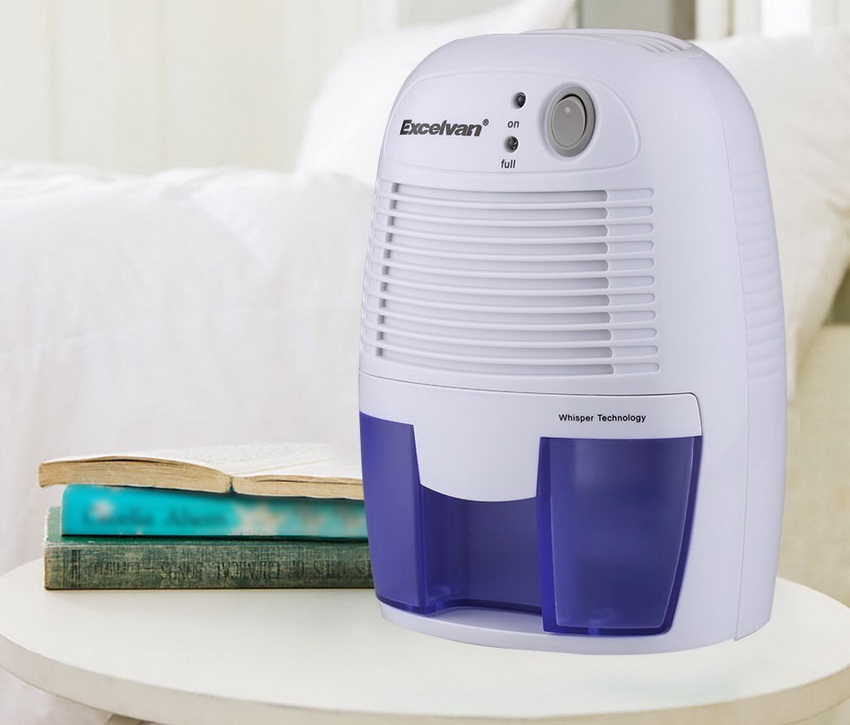
The most effective and practical way to create a comfortable microclimate in an apartment is to install a humidifier
Pay Attention! If there are certain rules for bedrooms, children's rooms and other areas where a person has been for a long time, then it is not necessary to strictly adhere to normal humidity in the kitchen, bathroom, corridor and bathroom. These rooms are considered auxiliary.
The unit of measurement for absolute humidity is the actual steam content in 1 m³ of air. For example, one cubic meter of air can contain 13 g of water. In this case, the absolute humidity will be 13 g / m³.
To get the relative humidity, you need to do some calculations. This requires two indicators:
- maximum possible water content in 1 m³ of air;
- actual amount of water in 1 m³ of air.
The percentage of real data to the maximum possible value will be the relative humidity. For example, 1 m³ of air at a temperature of 24 ° C can hold a maximum of 21.8 g of liquid. If, in fact, 13 g of water is present in it, then the relative humidity will be 60%. For convenience, you can use a special table of absolute air humidity, which contains auxiliary data.
Indicators of the norm of air humidity in the room according to GOST
The indicator prescribed by GOST depends not only on the purpose of the premises, but also on the season. For the warm period, 30-60% is provided. In this case, the indicator of the relative humidity in the room is 60 percent, and the maximum allowable will be 65%. For some regions where the summer months are accompanied by high humidity, the guideline value can be increased to 75%.
For the cold season, the standards for the relative humidity in the room are 40-45%. The maximum allowable value is 60%.
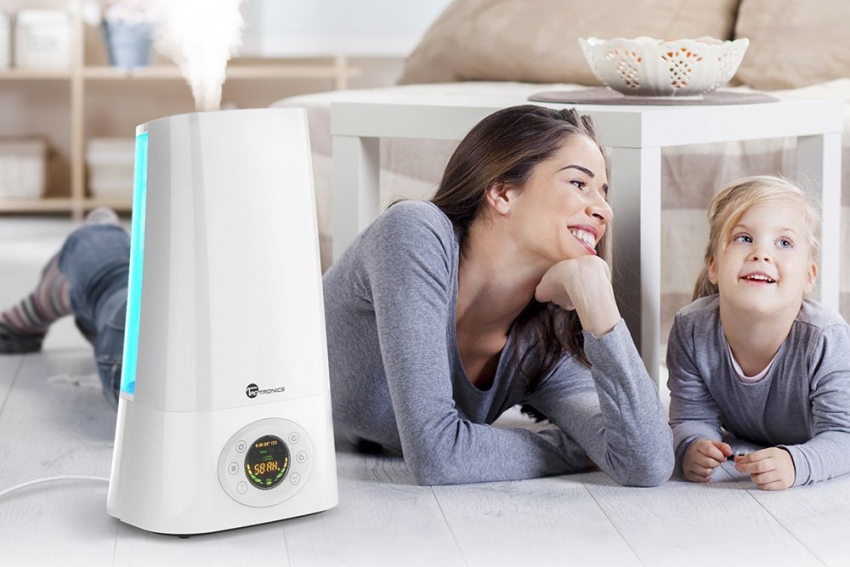
Through purifier dry air flows through the evaporating cassettes and is optimally humidified
For interior items and plants, standards are also provided:
- Furniture and antiques feel great at 40-60%.
- For household appliances, a humidity of 45-60% is recommended
- Books and other paper products need 30-65% humidity.
- The green space requirement depends on the type of plant. Tropical greens need a high level of moisture - 80-95%, subtropical ones are limited to 75-80%, and for all others, an indicator in the range of 40-70% is suitable.
Note! The table shows how relative humidity is related to human comfort and health. Its level depends on how comfortable harmful elements feel in the house and how negative processes proceed outside the norm of air humidity.
Comfort zones of elements harmful to humans:
| Type of harmful influence | Humidity,% | |||||||||
| 100 | 90 | 80 | 70 | 60 | 50 | 40 | 30 | 20 | 10 | |
| Bacteria | 1 | 2 | 3 | |||||||
| Fungi | 4 | 3 | 2 | 1 | ||||||
| Viruses | 1 | 2 | 3 | 4 | ||||||
| Dust mites | 5 | 4 | 3 | 2 | 1 | |||||
| Allergic reactions, asthma attacks |
5 |
4 |
3 |
2 |
1 |
1 |
2 |
3 |
4 |
5 |
| Ozone formation process | 1 | 2 | 3 | 4 | 5 | 6 | ||||
In the table, the value "6" shows the maximum impact, "1" - the minimum impact on people.
Related article:
Air humidifier: rating of the best 2016-2017
The most popular manufacturers and the best models, comparative characteristics of structures, their advantages and disadvantages.
The norm of air humidity in the apartment for the child
The child's immunity does not cope with the negative influence of environmental factors as effectively as the body of an adult. Children overheat or freeze much faster, easily catch colds, get sick with infectious diseases and are more difficult to tolerate.
For this reason, it is important to maintain optimal air humidity in the apartment for the child, especially in his room, where it is necessary to create conditions for maintaining the immune forces of the baby.
In the children's room, in no case should the air be dry. Such an atmosphere provokes an intense loss of moisture in the baby's body. Drying out of the mucous membranes of the nasopharynx leads to their inability to resist viruses and infections. The child may experience itchy eyes and flaky skin. For a child, the optimal humidity in the apartment is considered to be in the range of 50-60%.
According to Dr. Yevgeny Komarovsky, the value of normal air humidity in an apartment can be increased to 60% for a healthy baby and 70% for a child with an infectious disease. The higher the humidity level, the less intense the drying out of the mucous membranes.
Indicators of normal humidity in an apartment for a child's body in winter are the same as for a warm season. However, there is one caveat: the maximum air temperature in the room should not exceed 24 ° C. If the room gets hotter, then 60% humidity will make the tropics out of it. In practice, in the heat, the high humidity in the apartment is more difficult to tolerate than in the cold season.
Important! Exceeding 24 ° C in the nursery can lead to overheating of the baby's body. As a result, the drying of the mucous membranes and the loss of fluid will accelerate.
How to achieve optimal humidity in an apartment
The main factor that has the greatest influence on humidity is temperature. The warmer the room, the more water the air can absorb. However, when calculating the relative humidity, it is worth remembering that at high temperatures the volume of liquid in the same amount of air will be less. This nuance can be advantageously used to maintain the norm of humidity, the air outside in winter is very fresh and optimal parameters are provided by ventilation.
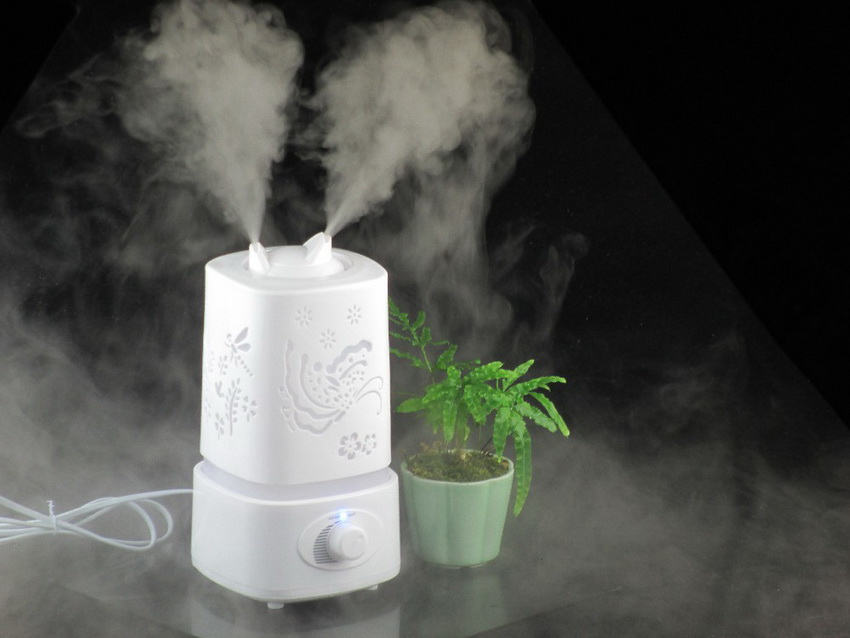
In most humidifier models, water is brought to a boil using a heating plate and hot steam is distributed in the room air.
Moisture is absorbed:
- appliances designed for heating;
- interior items such as toys, upholstered furniture, carpets;
- conditioners.
Plants and aquariums, containers filled with water, wet laundry, a flowing roof or pipes can be considered a small source of moisture.
How to determine the humidity in the apartment without device
To determine how much the air humidity level in the house has deviated, you can do without a special device and use:
- a glass of water;
- Assman table;
- spruce cone.
To determine the relative air humidity using a glass of water, cool the filled container in the refrigerator to 5 ° C. It will take about 3 hours for the water and the vessel to reach the specified temperature. After that, the glass is placed on the table away from the battery. Condensation will form on the walls of the container within 5 minutes.
Further results will depend on the behavior of this condensate:
- After a few minutes, the glass has dried - the humidity indicator is lowered.
- Condensation on the walls has not disappeared - the room has a normal microclimate.
- Drops flowed through the vessel in streams - an excess of moisture is observed in the air.
A spruce cone can serve as a measuring device. It should be put away from heating appliances and after a few hours check the condition of the scales. If the air is too dry, the bump will open, with an excess of moisture, the scales will shrink tightly.
All these devices only indirectly indicate the presence of a problem. To accurately determine the microclimate in a room, it is better to buy an air humidity sensor.
Helpful advice! The primary sign of dry air is dry plant tips. Insufficient moisture can also be identified by synthetic clothing, which emits electrical charges under these conditions.
Features of using the temperature and humidity sensor
To measure humidity, you can use special devices called sensors or hygrometers. The device independently converts the received data and displays the result in percentage terms.
Many people are looking for a solution, wondering how to remove moisture in an apartment. Exhaust fans are used to control the microclimate in the bathroom and in other rooms with an excess of moisture. They prevent condensation from forming on walls and floors.
For residential premises, it is recommended to purchase a humidifier if there is a constant lack of moisture. You will also need to additionally buy air humidity sensors for the fan and humidifier, if such are not provided for by the designs of the devices themselves.
A hygrostat or sensor is based on the operating principle of a thermostat. The device opens and closes the contacts in response to the amount of water vapor in the air. Thus, the operation of the fan or humidifier becomes automated. The device turns on only when it is needed.
Controlling humidity in an apartment: how to reduce / increase the amount of steam in the air
Various methods are used to control the amount of steam in the air, including improvised means. Their combination allows you to achieve a certain result.
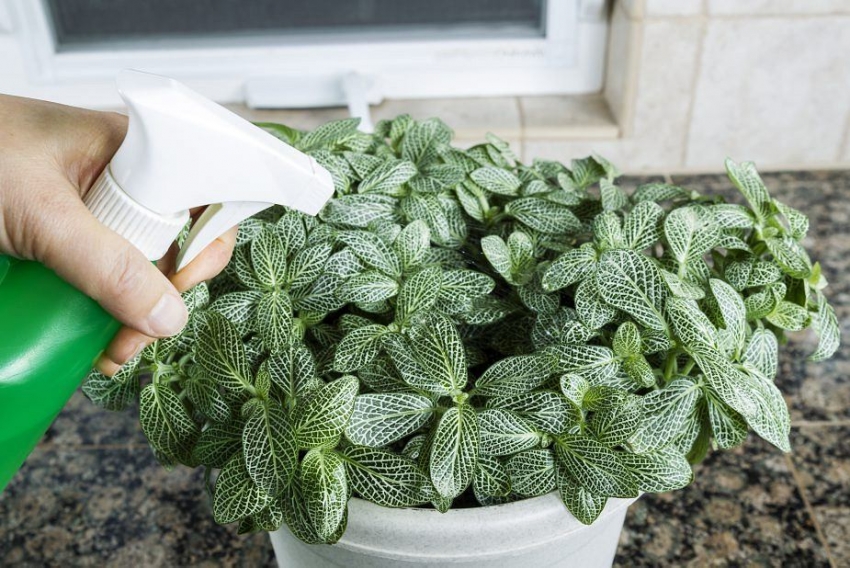
In the absence of a humidifier to saturate the air with moisture, sprinkle water from time to time with a spray bottle
How to get rid of humidity in an apartment:
- Ventilate the premises on a regular basis.
- Install exhaust fans where needed.
- Purchase a climate system or Air Dryer.
- Make timely repairs in the house (plumbing and plumbing maintenance).
- Use heaters and air conditioners.
- Refuse to dry the laundry indoors.
- Install a powerful hood in the kitchen.
Helpful advice! In order for the hygrometer readings to be reliable, it is recommended to install this device in the back of the room in order to exclude the influence of drafts and other facts.hogs.
How to increase the humidity in the room:
- Buy a tabletop fountain or aquarium (if none of the household has asthma).
- Minimize the use of air conditioning and heating appliances.
- Hang wet towels on the radiators.
- Spray water from time to time with a spray bottle, thereby saturating the air with moisture.
- Do regular wet cleaning in the house.
- Plant as many indoor plants as possible.
There are many devices that will allow you to achieve this or that result, depending on your needs. They are selected taking into account the microclimate in the house. Before purchasing them, it is recommended to accurately set the humidity parameters. For this, measurements are taken over several days.
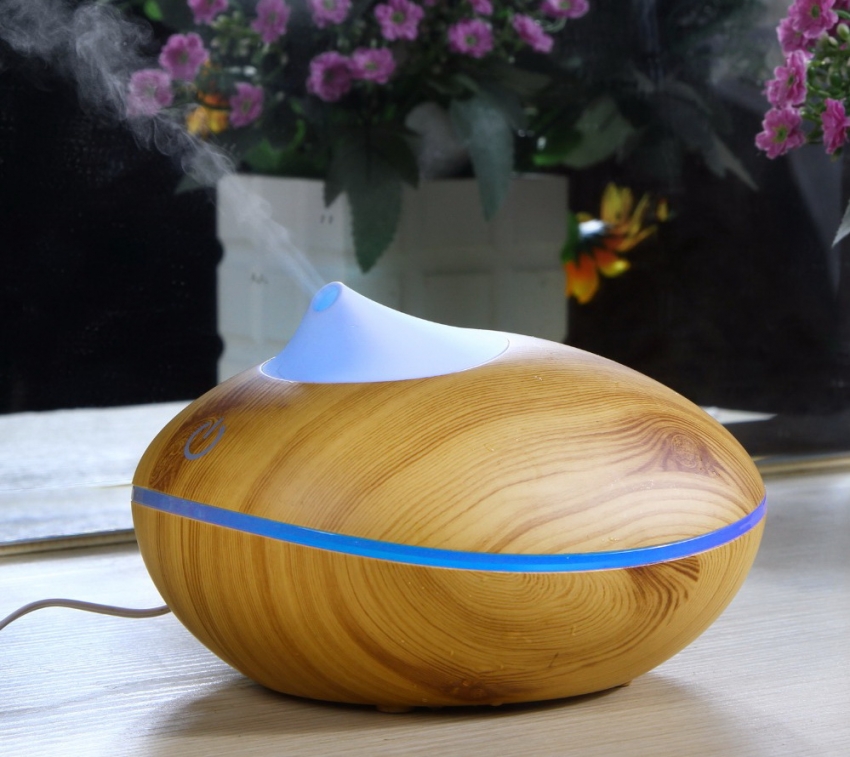
Modern humidifiers fit perfectly into the interior
You can maintain optimal humidity in the house using special devices - humidifiers. This category of climatic technology includes many modifications: traditional, steam, ultrasonic devices. Air “washers” and climatic complexes are more sophisticated versions of these devices, equipped with a hygrometer, timer and other useful additions.In the fight against mold, an ultraviolet lamp will help.
